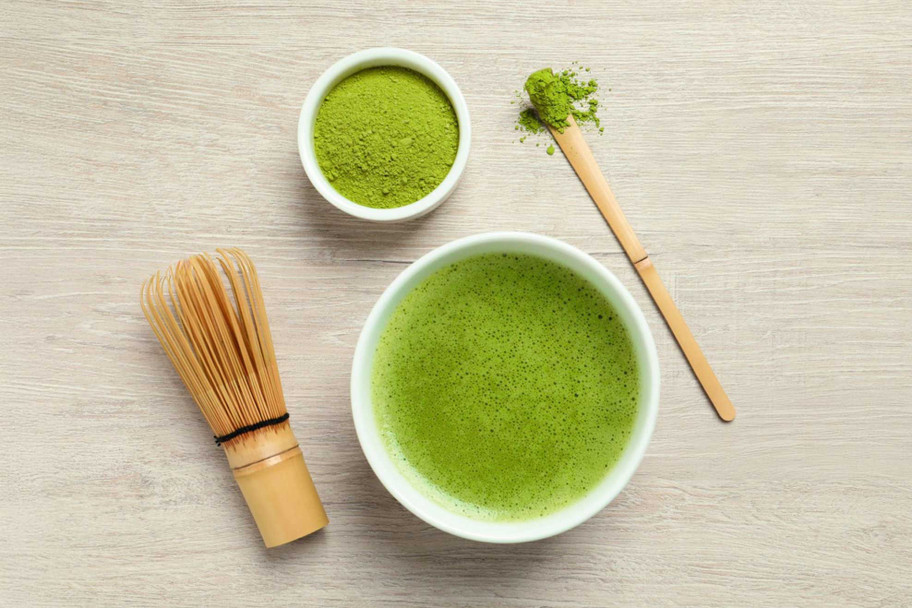Posted by I4C on 30th Jul 2025
What Is Matcha and Why Is It So Popular?
From TikTok and Instagram to artisan cafés and fine dining restaurants, matcha is everywhere right now. But this isn’t just another fleeting food trend; matcha’s rise is grounded in centuries of tradition, a growing interest in health and wellness, and a desire for natural, functional ingredients with flavour and flair.
In this guide, we’ll explore exactly what matcha is, how it’s made, why it’s become so popular, and, most importantly, how to use it in modern food and drink creations. Plus, we’ll share some simple, delicious matcha latte recipes using ingredients available now at i4C, including barista-style plant milks and premium syrups.
What is Matcha?
Matcha is a finely ground powder made from specially grown green tea leaves. Unlike traditional green tea, which is steeped and then discarded, matcha is whisked into liquid and consumed whole, delivering a more concentrated flavour and a greater dose of the tea’s natural nutrients.
The leaves used for matcha come from shade-grown tea plants. In the weeks leading up to harvest, the tea bushes are covered to protect them from direct sunlight. This process boosts chlorophyll levels, enhances the rich green colour, and encourages the production of L-theanine - a naturally occurring amino acid that’s thought to promote relaxation and focus.
After harvesting, the leaves are steamed, dried, de-veined, and ground slowly using traditional stone mills to create an ultra-fine, vivid green powder.
Matcha's Origins and Cultural Significance
Although matcha is currently making waves in Western food and drink culture, its roots run deep. It was first consumed in China during the Tang and Song dynasties, but the form we know today was refined in Japan, where it became integral to Zen Buddhist rituals and the Japanese tea ceremony (chanoyu). To this day, matcha remains an important part of Japanese heritage.
It’s important to acknowledge and respect these origins when using matcha in contemporary recipes, ensuring that this ingredient is not reduced to a gimmick but understood and appreciated for what it is: a centuries-old tradition with timeless appeal.
What Does Matcha Taste Like?
Describing the flavour of matcha can be tricky; it’s complex and layered, especially when you’re working with high-quality, fresh powder.
Matcha has a slightly grassy, earthy taste with umami depth and a touch of natural sweetness. Depending on the grade, it may have a smooth, velvety finish or a stronger, more astringent bite. This makes it incredibly versatile in both sweet and savoury dishes.
The taste pairs beautifully with creamy or nutty ingredients, making it an ideal match for barista oat milk, coconut milk, or almond milk. You can also complement it with flavoured syrups such as vanilla, rose, or caramel to highlight different notes in the matcha.
Why Has Matcha Become So Popular?
There are several reasons behind the meteoric rise of matcha in the UK and beyond:
- Health and Wellness Appeal
As consumers grow more ingredient-savvy, matcha’s nutritional benefits have caught attention. It’s packed with antioxidants, including catechins like EGCG (epigallocatechin gallate), which are studied for their potential to support heart health, metabolism, and immune function.
- Calm Energy Without the Crash
Matcha contains caffeine, but unlike coffee, it also has L-theanine, which may help slow the absorption of caffeine and promote a sense of calm focus. This means you can enjoy an energy boost without the jitters or mid-afternoon crash.
- Aesthetic and Instagram Appeal
Let’s face it, matcha is beautiful. That vibrant green hue adds instant visual appeal to lattes, ice creams, baked goods, and even savoury sauces. It’s a dream ingredient for content creators and chefs alike.
- Versatility in Food and Drink
From hot drinks and smoothies to cakes, cookies, glazes, and even tempura salts, matcha is endlessly adaptable. Whether you're running a café, pastry kitchen, or bar, it’s a creative way to expand your flavour palette.
What Are the Benefits of Matcha?
Here’s a quick breakdown of matcha’s commonly cited health benefits. While more research is needed in many areas, these are some of the reasons people are adding matcha to their daily routine:
- Rich in antioxidants (especially EGCG)
- May support metabolism and weight management
- Source of caffeine and L-theanine for balanced alertness
- May improve mental clarity and focus
- Supports healthy skin due to anti-inflammatory compounds
- Chlorophyll-rich, which may support detoxification
Note: Always enjoy matcha as part of a varied and balanced diet.

How to Use Matcha Powder
Using matcha is simple, but a few tips go a long way:
- Sift your matcha before whisking to avoid clumps.
- Use water just below boiling (around 70–80°C) to preserve flavour and nutrients.
- Whisk in a zig-zag motion until frothy, using a traditional bamboo whisk (chasen) or handheld frother.
- Pair with creamy or plant-based milks for drinks, or incorporate into dry mixes for baking.
Matcha Latte Recipes
We’ve developed a few easy, barista-style matcha lattes using organic matcha powder, plant-based barista milks, and flavoured syrups from i4C. These drinks are perfect for home use, cafés, or seasonal menus.
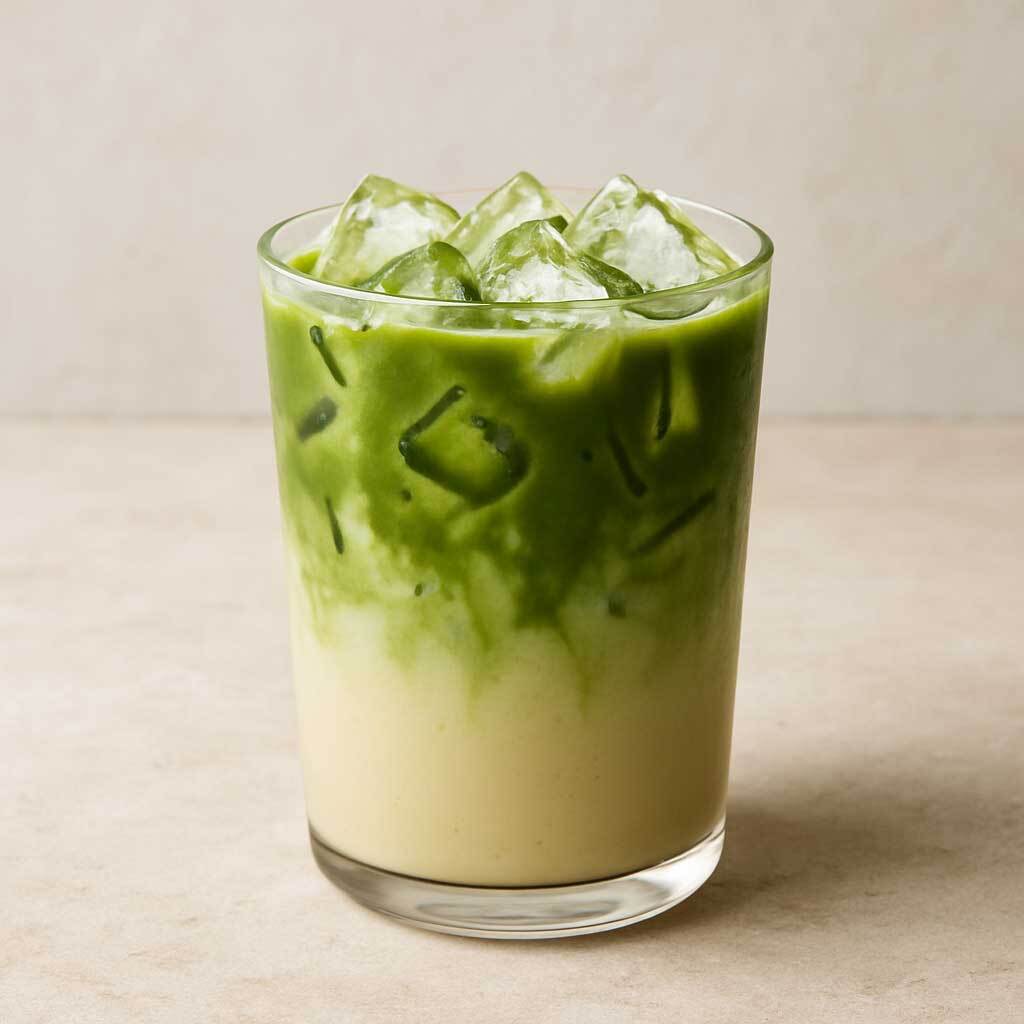
- Iced Vanilla Matcha Latte
Ingredients:
- 1 tsp Organic Matcha Tea Powder
- 60ml hot water
- 200ml Alpro Barista Oat Milk or Glebe Farm PureOaty Organic Barista Oat Drink
- Ice cubes
- 1 tsp William Fox Vanilla Syrup
Method:
- Whisk matcha with hot water until smooth and frothy.
- Fill a glass with ice and pour in oat milk.
- Add vanilla syrup and pour in the matcha.
- Stir gently and serve chilled.
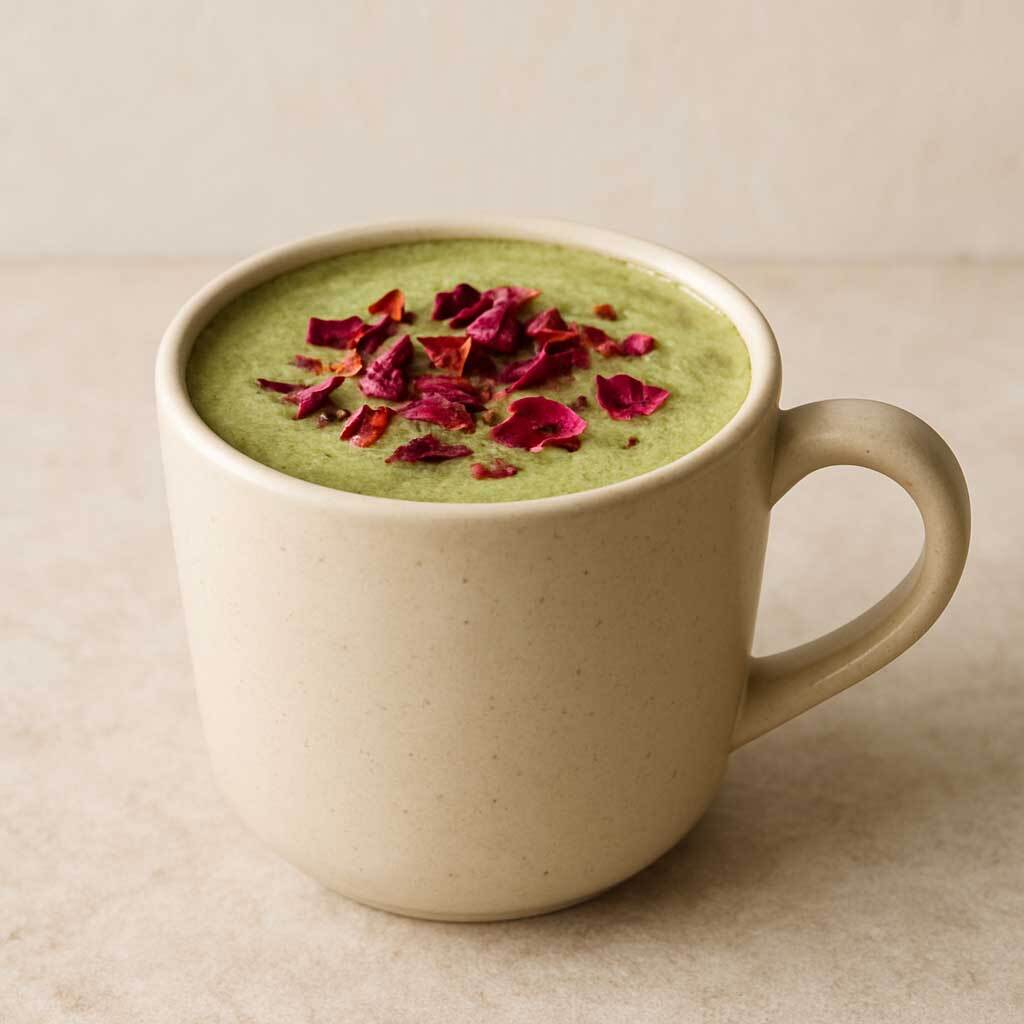
- Coconut Rose Hot Matcha
Ingredients:
- 1 tsp Organic Matcha Tea Powder
- 60ml hot water
- 200ml Alpro Barista Coconut Milk
- 1 tsp William Fox Rose Syrup
- Dried rose petals
Method:
- Prepare matcha with hot water.
- Heat coconut milk gently, stir in rose syrup.
- Combine with matcha.
- Sprinkle dried rose petals on top. Enjoy.
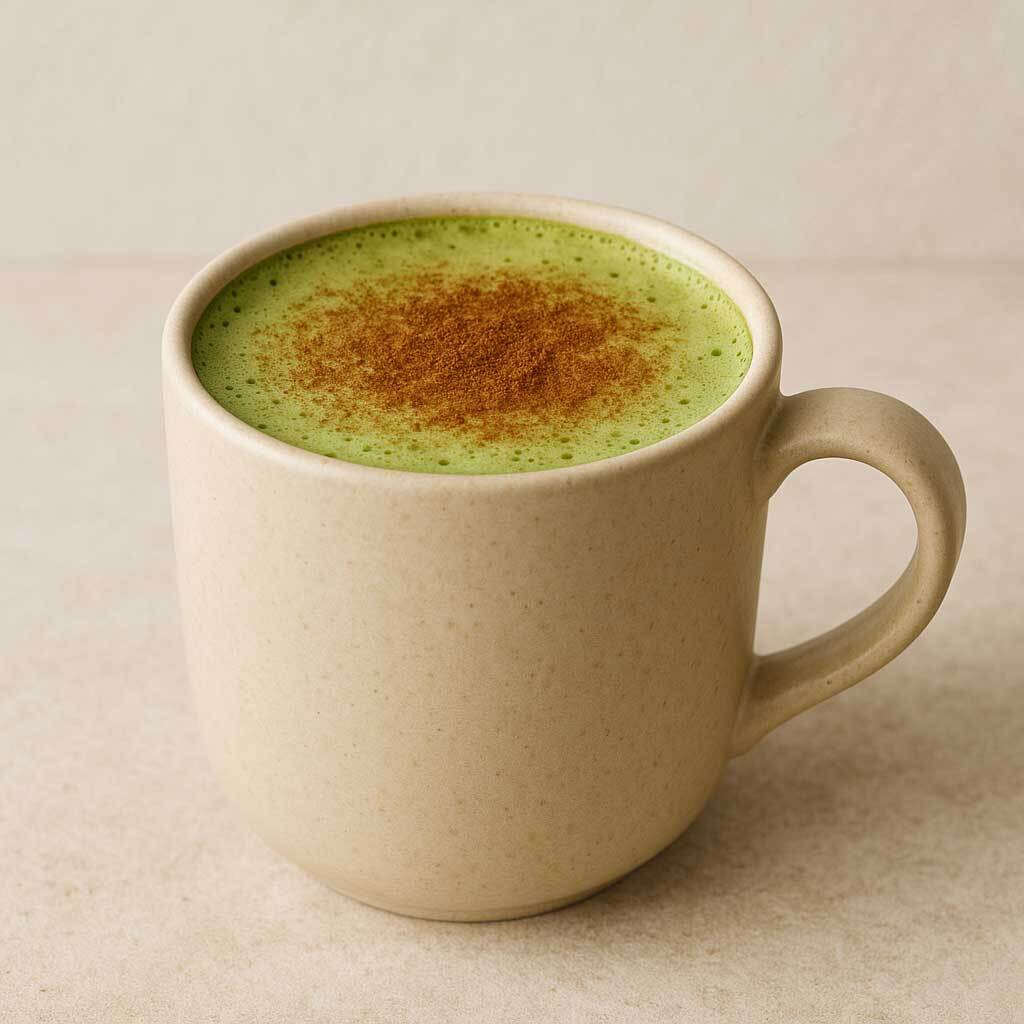
- Autumn Spiced Amaretto Matcha
Ingredients:
- 1 tsp Organic Matcha Tea Powder
- 60ml hot water
- 200ml Alpro Barista Almond Milk
- 1 tsp William Fox Amaretto Syrup
Optional: dash of William Fox Pumpkin Spice Syrup
Method:
- Whisk matcha with hot water.
- Steam almond milk with the syrup(s).
- Combine and garnish with a pinch of cinnamon.
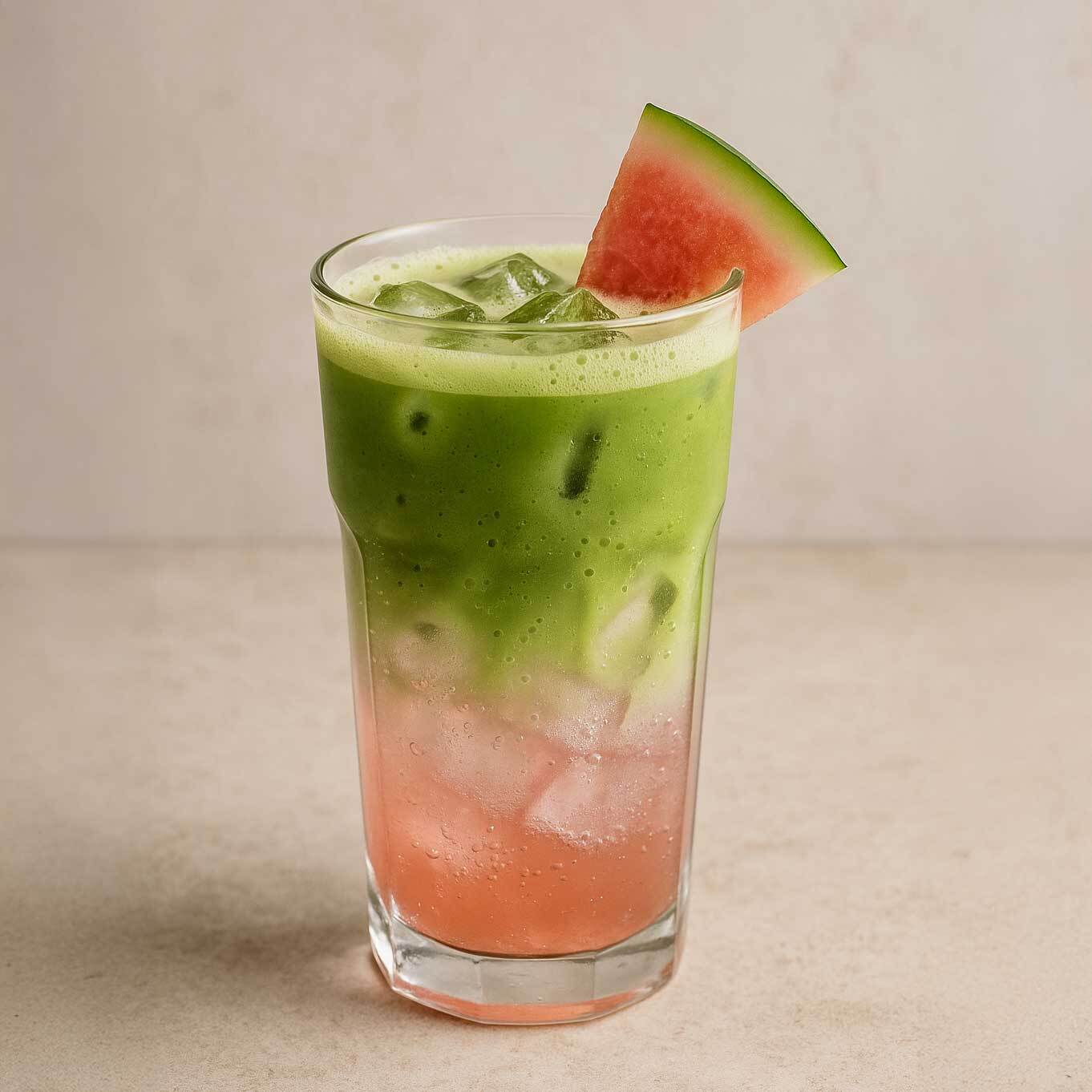
- Summer Watermelon Matcha Spritz
Ingredients:
- 1 tsp Organic Matcha Tea Powder
- 60ml hot water
- 150ml Alpro Sweetened Soya Milk
- 1 tsp William Fox Watermelon Syrup
- Ice & sparkling water to top
Method:
- Whisk matcha with water.
- Mix in syrup and soya milk.
- Pour over ice, top with a splash of sparkling water for a refreshing twist.
More Ways to Use Matcha Powder
- Smoothies: Blend into banana and almond butter smoothies for an antioxidant boost.
- Baking: Add to sponge cake, shortbread, or brownies for a green twist.
- Glazes: Stir into icing sugar and a little water for an eye-catching drizzle.
- Chocolates: Infuse into ganache or white chocolate truffles.
- Savoury dishes: Mix into salt or seasoning blends for fish or tempura.
Stock Matcha and Professional Barista Essentials at i4C
At Infusions4chefs, we stock everything you need to start creating matcha drinks, desserts, and dishes with confidence. Our Organic Matcha Tea Powder offers rich colour, smooth flavour, and consistent results. Pair it with barista-quality plant-based milks from Alpro and Glebe Farm, or flavour-packed syrups from William Fox and 1883 Maison Routin.
Shop everything you need to ride the matcha wave, whether you're a chef, a barista, or a food lover exploring new flavours.

